Japanese fruits are diverse produce that range from familiar varieties like apples and grapes to distinctively Japanese fruits such as persimmons (kaki), Nashi pears, and yuzu. Japan is famous for its meticulous cultivation techniques, which produce exceptional quality and flavorful fruits.
Seasonality plays a significant role in Japanese fruit consumption, with certain fruits like cherries and peaches eagerly anticipated and enjoyed during their peak seasons. Luxury fruit gifting is a common practice, where perfectly cultivated fruits are presented as gifts in elegant packaging.
Discover more about Japanese fruits along with some dishes and drinks that utilize their natural flavors. While at it, let me introduce you to some well-known veggies in Japan.
Afterward, let’s uncover the factors that make Japanese fruit stand out, such as their high quality and some regions in the country that are popularized for cultivating fruits.
22 Popular Japanese Fruits with Filters
I’m going to show you 22 fruits that are characteristic of Japan’s fruit scene. These options are arranged according to how popular they are in the country.
Utilize my interactive filters to get a smoother reading experience. There are options for national fruits, native fruits, fruits of foreign origins, exotic fruits, fruits for cooking, fruits for making beverages, and fruits for garnishing foods and drinks.
Apple
- For Dishes
- Non-Native
Apple, or ringo in Japanese, is a popular fruit in Japan, often enjoyed fresh for its purest flavor. Introduced in Japan during the Meiji Period, apples have become a key export in the country.
They come in various colors, like red, green, and yellow, with diverse shapes and sizes. In Japan, the Fuji apple, named after Mount Fuji, is especially loved for its large size, red skin, and crispy texture.
Kaki
- For Dishes
- National
- Native
Kaki is a persimmon fruit introduced to Japan in the 7th century. As a leading crop in Japan, China, and Korea, it looks like a pear or apple and has a red-orange or yellow-orange skin when ripe.
The flesh ranges from orange, yellow, or deep brown with a sweetness similar to honey. Though unripe kaki tastes bitter or tart, it’s often eaten fresh, peeled, or as dried hoshigaki in Japan.
Strawberry
- For Dishes
- Non-Native
Strawberry is a prized fruit in Japan that made its way into the country by the mid-1800s. Called ichigo in Japan, the fruit has a bright red color and sweet, aromatic flavor.
Japanese strawberries are relatively large and especially sweet. In spring, you can even pick them fresh on Japanese farms.
They are often used in pastries, cakes, jams, ice cream, and milkshakes, or enjoyed fresh.
Mandarin Orange
- For Beverages
- For Dishes
- Non-Native
Mandarin orange, or mikan, is a juicy citrus widely cultivated in Japan for over 400 years. Mainly grown in Ehime and Wakayama, it’s known for its sweet flavor with a hint of tanginess and easy-to-peel, leathery rind.
Typically about 1.8 inches in diameter, mikan has 10 to 12 juicy segments inside. The fruit’s skin color varies by climate, turning green in humid areas and reddish-orange on cooler nights, with those from cold regions tasting sweeter.
Usually seedless, mikan is perfect for desserts, jams, and juices, with Unshu and Hassaku being popular varieties.
Peach
- For Dishes
- Non-Native
Peach, or momo in Japan, is a fuzzy fruit with a pink color when ripe. Cultivated in Japan since the Jomon period, peaches have a single pit surrounded by either white or yellow flesh, with the white being sweeter.
Typically, Japanese peaches are larger and more tender than their Western counterparts. They are enjoyed raw for their sweet and slightly sour flavor.
Yamanashi and Fukushima are known for their peach cultivation, with the kanechika peach, boasting 22.2 percent sugar content, recognized as the world’s sweetest by Guinness.
Grape
- For Beverages
- For Dishes
- Non-Native
Grapes are a common fruit in Japan, appearing in colors from black to deep blue, green, orange, yellow, and crimson. They have a juicy, jelly-like texture and tiny bitter seeds.
Japanese grapes tend to have thicker skin along with a sweet flavor and a hint of tartness. Grown extensively in Yamanashi Prefecture, the deep purple kyoho grape is particularly favored.
Watermelon
- For Beverages
- For Dishes
- Non-Native
Watermelon is a refreshing fruit enjoyed in Japan all the way back in the Edo Period. By the 1930s, Japan pioneered the cultivation of seedless watermelons.
Today, unique square-shaped watermelons are a common sight in Japan that go for a higher price. In Japan, watermelons are larger, have thicker rinds, and have flesh that comes in red and yellow.
Watermelon also plays a central role in Suika-wari, a traditional Japanese game typically played on the beach where participants try to split a watermelon while blindfolded.
Japanese Pear
- Native
Japanese pear, also known as Nashi, Asian pear, or sand pear, is a beloved sweet treat in Japan and many East Asian countries. The pear has a crunchy texture and mild flavor, boasting a larger and crisper profile than Western pears.
The pear is easily recognized by its green skin and spherical shape. In Japan, nashi is best savored fresh or added to savory dishes due to its high water content.
Kiwifruit
- For Beverages
- Non-Native
Kiwifruit is a healthy fruit cherished in Japan and globally. By the 1960s, the fruit was also grown and eaten in Japan. This fruit has a hairy brown skin and juicy green flesh.
Plus, it is known for its tart flavor and is often eaten fresh, though it’s also delicious in juices and baked goods. To the Japanese, kiwifruit is especially popular among women for recovery after childbirth.
Japanese Plum
- For Beverages
- For Dishes
- Native
Japanese plum, also known as ume or Chinese plum, is a part of Japanese culture, dating back to the Nara Period. The fruit features vibrant yellow or red skin and distinctive yellow flesh,
Ume comes with many varieties like hibai, yabai, and the Bungo province’s special hybrid, bungo.
Known as “tsuyu” or “plum rain” for its rainy season abundance, ume even has festivities like the plum blossom celebration and is traditionally used in pickled foods like umeboshi and plum wine (umeshu).
Japanese Melon
- For Dishes
- Native
Japanese melon is considered a luxury, with the Yubari King melon being the most expensive, sometimes costing up to 20000 dollars.
Originating from greenhouse cultivation in the Taisho Period, Hokkaido is the most well-known place to find these melons.
The melons vary in shape, color, and taste, often round with smooth skin. Additionally, the flesh colors range from green in muskmelons to orange in cantaloupes, with yellow and white varieties also popular.
Aside from enjoying fresh, they’re also enjoyed in smoothies and desserts, available in supermarkets either sliced or whole.
Sakuranbo
- Native
Sakuranbo, known as Japanese cherries, are easy to find in Japan, Korea, China, and Russia. In Japan, satonishiki has been especially popular since its introduction by Sato Esuke in the Meiji period in the 1900s.
These cherries, similar in shape and size to common varieties, boast a striking bright red color. In Japan, Yamagata Prefecture is the main production area for getting sakurando.
Typically eaten fresh, these cherries are also enjoyed in desserts like ice cream and cakes. Japanese cherries are juicier with smaller stones compared to American ones.
Yuzu
- For Beverages
- For Garnish
- Native
Yuzu is a citrus fruit from Japan that originated in East Asia, particularly central China and Tibet. The fruit was introduced to Japan during the Asuka Period (538 to 710).
Nowadays, this fruit is well-known in East Asia, Spain, Australia, and France. In Japan, you can find yuzu easily on Shikoku Island, with the fruit being similar to a small grapefruit with 2-3 inches in diameter.
It has uneven skin in yellow or green color based on the ripeness. Yuzu’s taste is sour and tart, making it a good choice for making juices, jams, and seasoning.
Meanwhile, the locals also use its rind to decorate dishes. Additionally, there are many types of yuzu in Japan, with Hana yuzu being an ornamental type.
Nectarine
- For Dishes
- Non-Native
Nectarine is like a cousin of peach, possessing smooth skin that is red or yellow in Japan. They share a similar taste to peaches but are a bit more tart and tangy, with firm, sweet, yellow flesh.
You can find nectarines and peaches with different types of pits, ranging from freestone or clingstone to semi-freestone. Nectarines are fresh in salads, on desserts, or cooked to enhance their sweetness.
In Japan, the nectarine season is from July to August, but they tend to be pricey.
Sudachi
- For Beverages
- For Dishes
- For Garnish
- Native
Sudachi is a unique Japanese citrus fruit native to Tokushima Prefecture, making it a regional specialty. It is smaller than yuzu, possessing a round shape and green skin.
Plus, sudachi’s intense sourness means it’s widely used in Japanese cuisine to add flavor to fish, meat, and other dishes as a substitute for lime or lemon.
Sudachi is essential for enjoying matsutake mushrooms and commonly serves as a garnish in soba, udon, nabe, and alcoholic drinks.
Kinkan
- Exotic
- For Garnish
- Native
Kinkan, known as kumquat, is a Japanese version of this fruit boasting an attractive yellow color. Its Cantonese name means “golden mandarin orange,” and its size resembles a large olive.
Kinkan varies in shape, including the round Marumi with sour flesh and a sweet, edible rind. Other varieties, like the oval kumquat and Meiwa, are less sour, making them ideal for marmalade, jellies, and sweet liqueurs.
In Japan and other Asian countries, kinkan symbolize luck and are common New Year gifts.
Hyuganatsu
- For Beverages
- Native
Hyuganatsu is a citrus fruit from Miyazaki Prefecture in Kyushu, Japan, named after Hyūga. Interestingly, the term “natsu” in its name means summer.
Found in the 1820s, it’s believed to be a yuzu and pomelo hybrid. This medium-sized, round to oblong fruit turns light yellow when ripe, offering sweet flesh with a slight sourness.
Typically consumed cut up with sugar, it retains its thick pith. Hyuganatsu is notable for its oil, which is rich in certain compounds.
Pineapple
- For Beverages
- For Dishes
- For Garnish
- Non-Native
Pineapple, a tropical fruit from South America, is also grown in Japan, mainly in the warm region of Okinawa. These pineapples are a bit smaller, but they retain their iconic sour and sweet profile.
They have juicy, slightly firm flesh and are less acidic, making them gentle on the stomach. Pineapples can be eaten on their own, added to smoothies, salads, pizzas, or used in cocktails.
Fig
- Non-Native
Fig is a fruit that came to Japan in the 1600s, where it was once called “foreigner’s kaki.” Its shape is like a tear, with a green peel turning brown and purple when ripe.
Inside, its sweet, reddish flesh contains numerous crunchy seeds. Japan grows several fig varieties, including Horaishi, Masui Dauphine, and Toyomitsuhime from Fukuoka.
Masui Dauphine is the most famous for its large size, and it was named after its cultivator Masui in the 1900s. To the Japanese, figs are delicious raw for their crunch, dried as snacks, or transformed into tasty jams.
Akebia
- Exotic
- For Dishes
- Native
Akebia is a fruit native to northern Japan and belongs to the Lardizabalaceae family. It’s a seasonal fruit often cited in Japanese literature as the country’s strangest fruit.
Its white, semi-translucent flesh is sweet, similar to a mix of passionfruit, lychee, and banana. As for appearance, akebia looks like white dragon fruit with black seeds.
Ideally, akebia is for enhancing Japanese dishes and drinks, especially in rural Tohoku to sweeten pickled cucumbers with salt. It’s also added to tea, enjoyed as a dessert, or in Yamagata Prefecture, cooked as a vegetable.
Blueberry
- For Dishes
- For Garnish
- Non-Native
Blueberries are small, round fruits cultivated in Japan and many parts all over the world. The fruits are around 0.2 to 0.6 inches in diameter, having smooth, dark blue skin and soft, juicy flesh.
Blueberries are commonly sold fresh but can also be found frozen or dried.
The taste of blueberries is sweet and slightly tart, with a delicate flavor often described as “earthy.”
They have a soft, chewy texture, making them a popular ingredient in many dishes, from salads to smoothies. They are also commonly used in baking, such as in muffins, cakes, and pies.
In Japan, the blueberry season runs from late June to September.
Japanese Wineberry
- Exotic
- Native
Japanese wineberry, also known as Rubus phoenicolasius, is a fruit native to Asia. These berries come in a bright red color with hairy stems and leaves.
The fruit is small and round, with a bright red color and a slightly fuzzy texture. They have a sweet and tart flavor with a hint of citrus and a texture similar to a raspberry.
You can mix Japanese wineberry with other berries, like strawberries or blackberries, and add to your dessert or breakfast for a wholesome meal.
What Dishes Use Japanese Fruits?
In Japanese cooking, fruits are made into various culinary creations to bring the flavors to another level/ These are some options to try out:
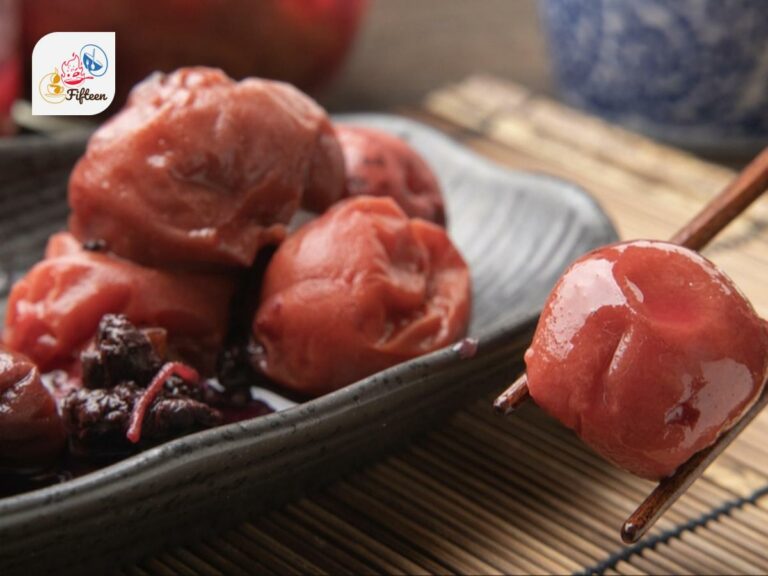
Umeboshi
Umeboshi are pickled Japanese plums with a sour and salty taste. They are commonly eaten with rice, added to bento boxes, or used as an ingredient in various Japanese dishes to add flavor.

Japanese Fruit Sandwich
A Japanese fruit sandwich is a sweet sandwich filled with fresh fruits like strawberries, kiwi, peaches, and whipped cream, between two slices of soft white bread. It’s a popular dessert or snack in Japan, known for its beautiful appearance and refreshing taste.
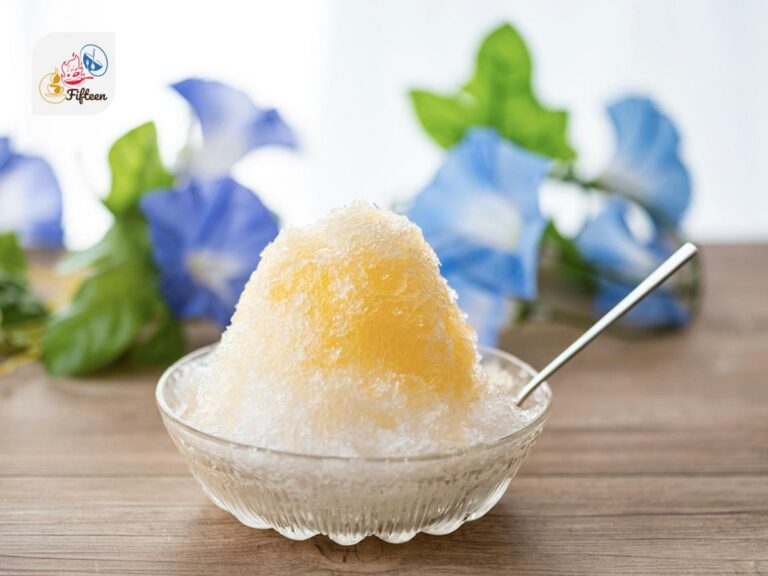
Kakigori
Kakigori is a Japanese shaved ice dessert flavored with syrup and often condensed milk. It’s especially popular during the hot summer months, offering a variety of flavors ranging from traditional matcha to fruity options like strawberry, kiwi, and melon.
Don’t stop at only knowing about the specialties of Japan, as these fruits are also suitable for whipping up flavorful drinks.
What Are Some Japanese Fruit-based Beverages?
Thanks to the high quality of fruits, Japanese drinks are greatly enhanced by them, incorporating the best flavor of nature:
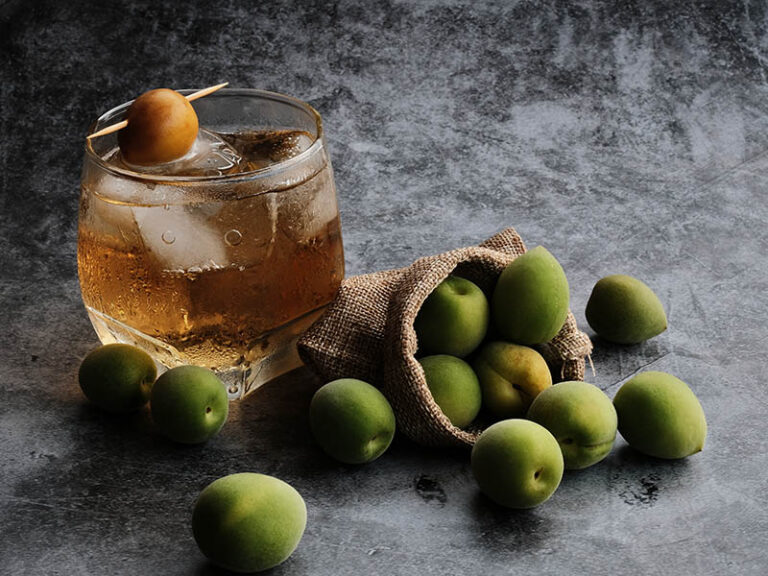
Umeshu
Umeshu is a sweet Japanese liqueur made from ume plums steeped in alcohol and sugar. It has a unique balance of sweetness and acidity, making it a popular choice for sipping after meals or as a cocktail base.
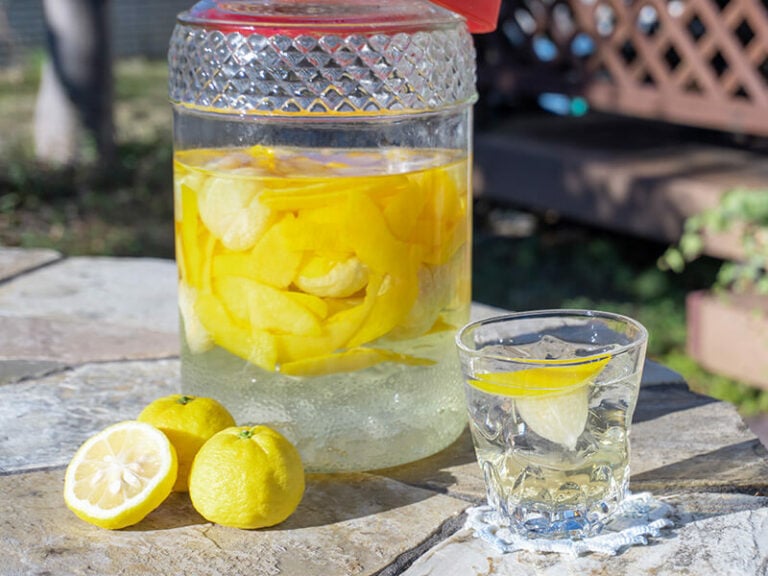
Yuzushu
Yuzushu is a Japanese citrus liqueur made by infusing yuzu fruit in alcohol, often with added sugar. It has the distinct, aromatic flavor of yuzu, offering a refreshing and slightly tart taste.
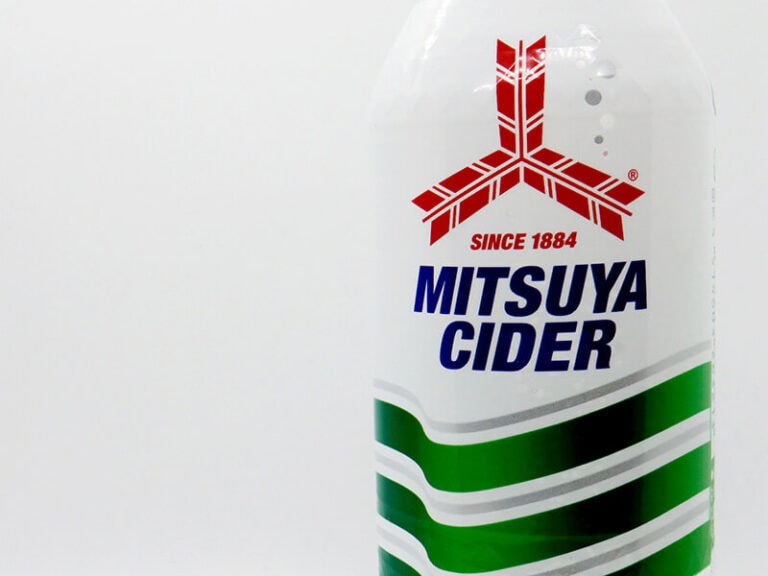
Mitsuya Cider
Mitsuya Cider is a popular Japanese carbonated soft drink that resembles the taste of a sweetened soda, often flavored with fruits like lemon, mikan, grape, and white peach. Despite its name, it doesn’t contain alcohol and is known for its refreshing and crisp taste.
Those are only a few examples of how people use fruits to flavor Japanese refreshments, as there are endless ways to do so. With that said, allow me to divert your attention to some veggies in Japan.
What Are Japanese Vegetables?
As an island nation, Japan boasts some of the unique vegetables with a one-of-a-kind flavor. Here are some suggestions for Japanese vegetables:
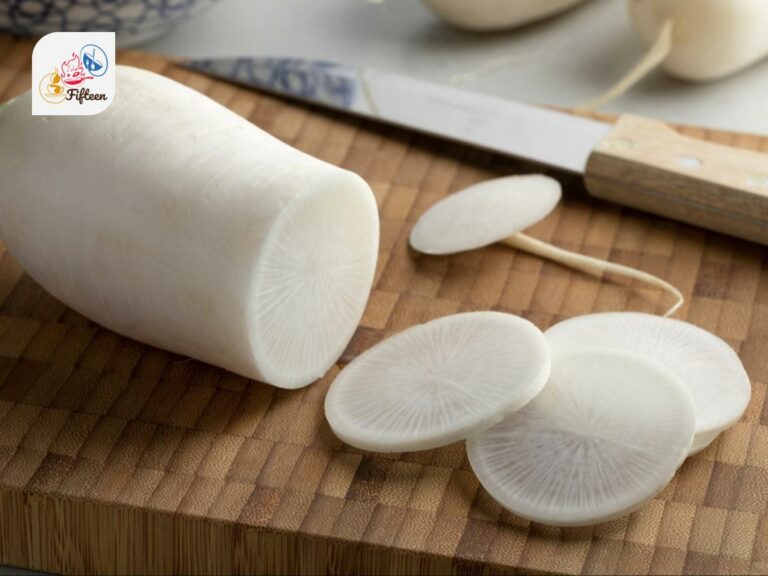
Daikon
Daikon is a large white radish with a crisp texture and a mild flavor. It is often eaten raw, pickled, or added to soups and stews in Japanese cuisine.
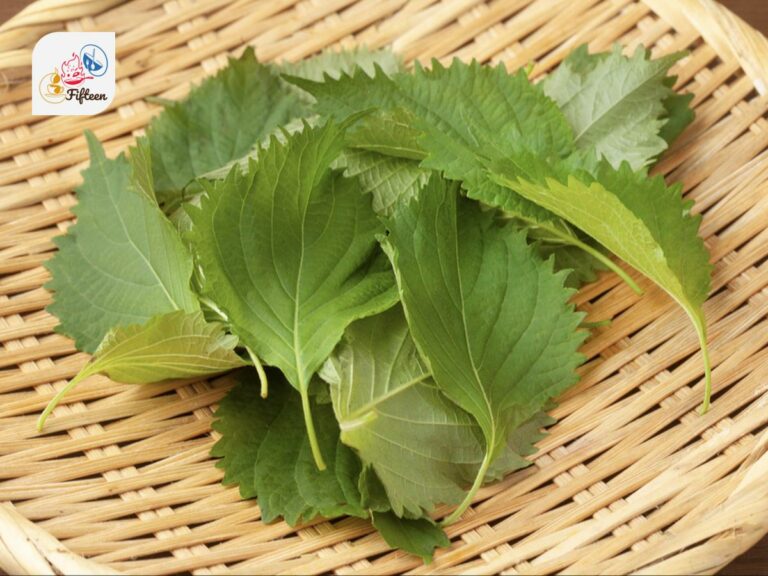
Shiso
Shiso is a leafy herb with green or purple leaves, known for its fresh, aromatic flavor. It is used as a garnish, in salads, and as a flavor enhancer in sushi and other dishes.
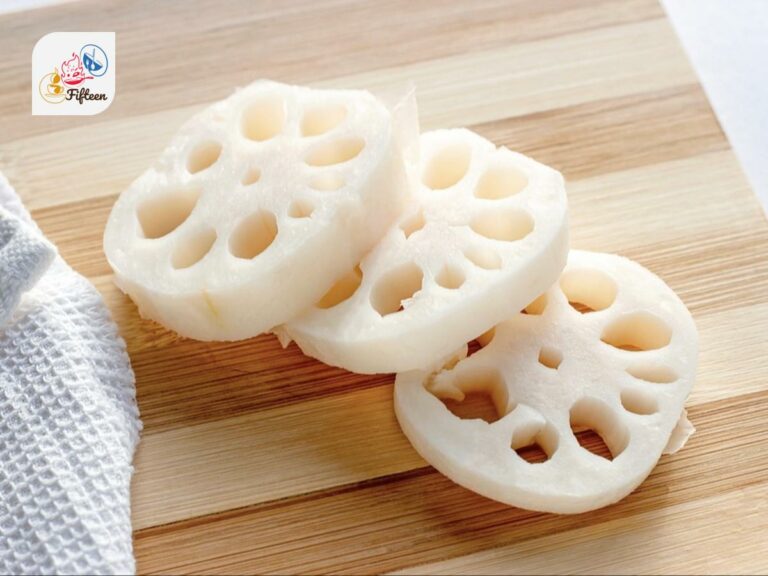
Renkon
Renkon is the root of the lotus plant, recognized for its unique appearance with holes throughout. It has a crunchy texture and is used in salads, stir-fries, and as a decorative ingredient in many Japanese dishes.
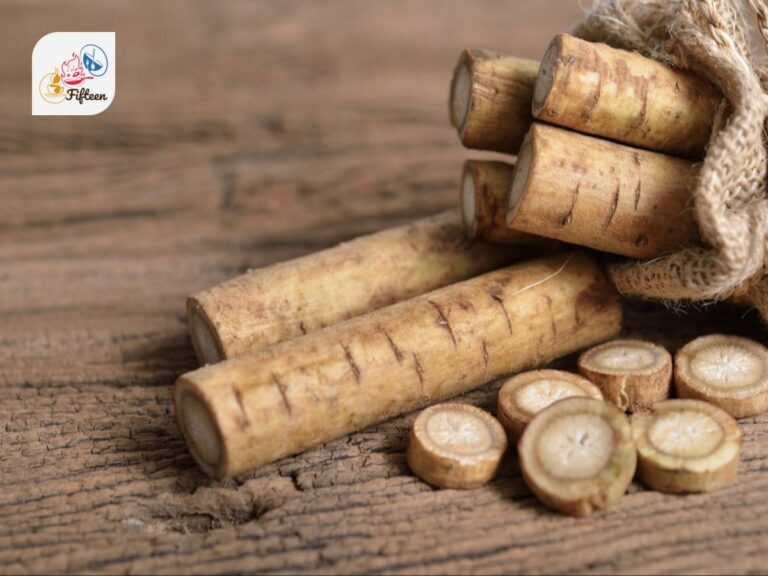
Gobo
Gobo is the root of the burdock plant, and it is appreciated for its earthy taste and fibrous texture. It is commonly used in stir-fries, soups, and as a pickled condiment.

Nasu
Nasu is a Japanese eggplant, smaller and thinner than its Western counterparts, with a tender texture and sweet flavor. It is versatile in cooking, often grilled, baked, or used in stews.
Afterward, you shouldn’t miss the chance to look into the reasons that make Japanese fruits a high-quality item in the global market.
What Factors Contribute to the High Quality of Japanese Fruits?
In Japan, the land is only one of the features that make the fruits here peak in quality. Here are other reasons that help achieve the high-quality status:
Next, let’s go deeper into Japanese fruits with some regions in Japan that offer the best produce.
What Are the Regions Known for Fruits in Japan?
These are a few areas in Japan that have the best fruit quality:
Mountainous terrain and cool climate, ideal for stone fruits and grapes; large temperature differences between day and night enhance fruit sweetness.
Cold winters and cool summers provide optimal conditions for growing crisp and sweet apples.
High altitude and clean water sources contribute to the cultivation of high-quality apples and grapes.
Mild climate and abundant sunshine support the growth of sweet peaches and grapes; known as the “Fruit Kingdom” for its variety of fruit production.
Warm, temperate climate along the Seto Inland Sea perfect for citrus fruits; large sunny days with moderate rainfall.
Warm coastal climate favors the cultivation of sweet citrus fruits and persimmons; known as Japan’s top producer of ume.
Mild climate with rich, fertile soil ideal for strawberries; the region’s technical innovations in strawberry farming lead to high-quality production.
Have you found your favorite Japanese fruit yet? Make sure to share with me in the comment section and spread these fruity options with others around you.


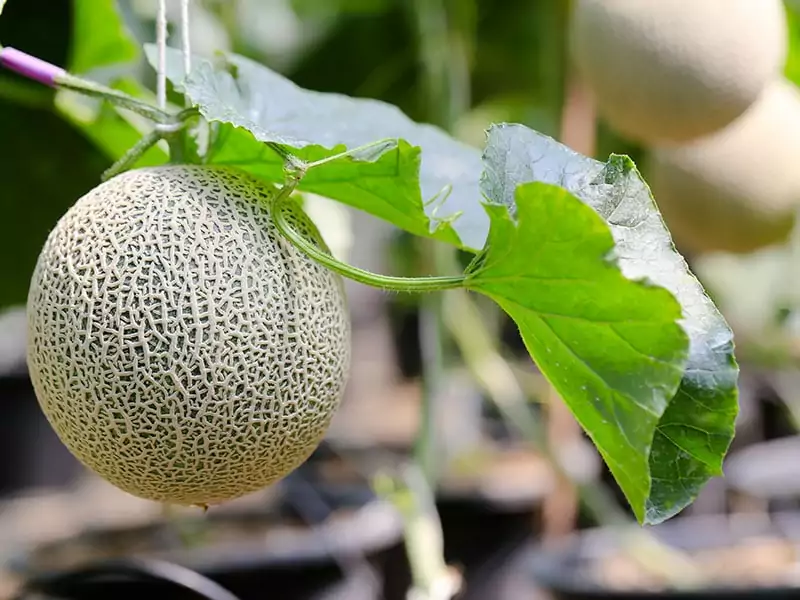
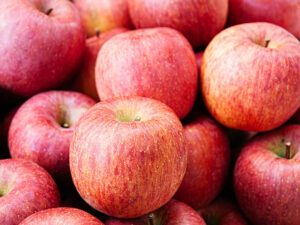
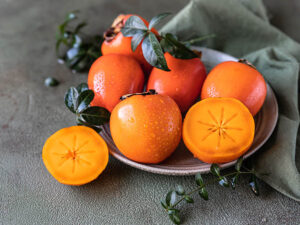
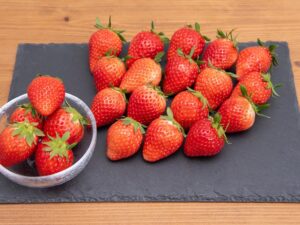
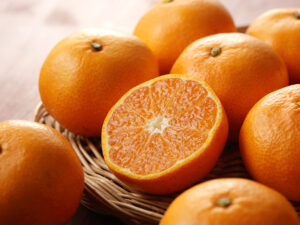
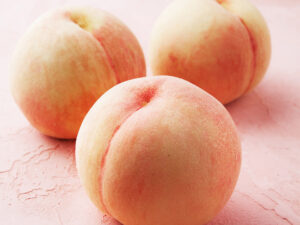
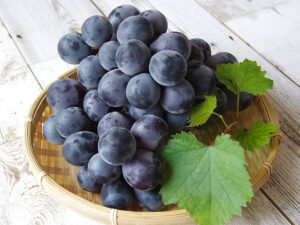
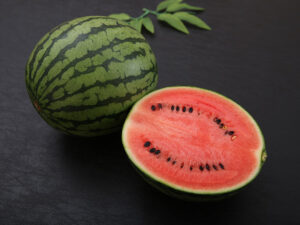
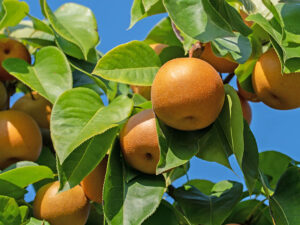
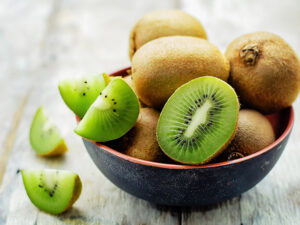
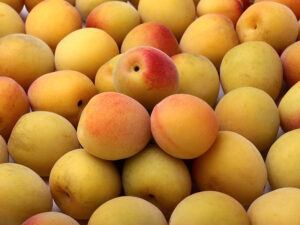
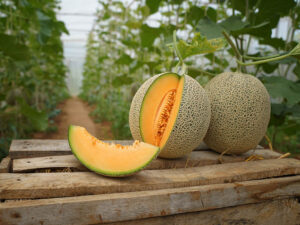
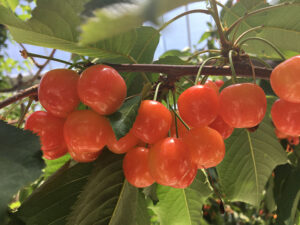
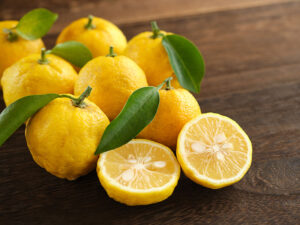
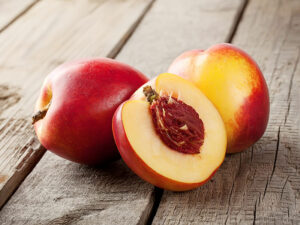
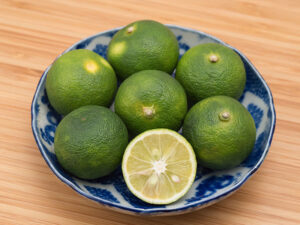
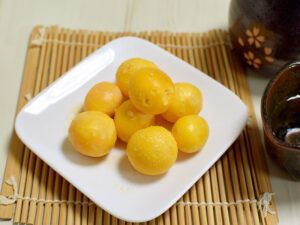
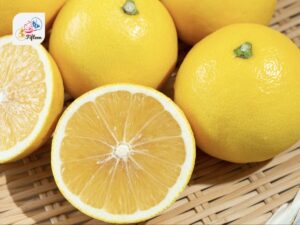
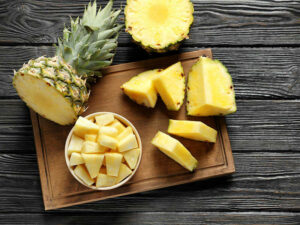
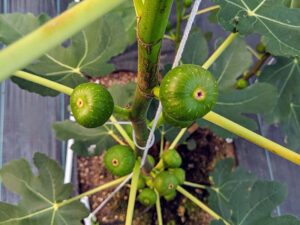
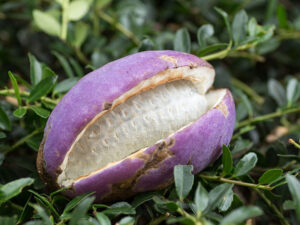
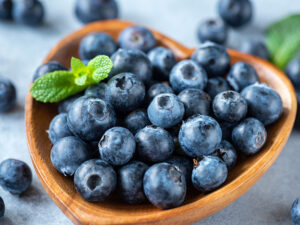
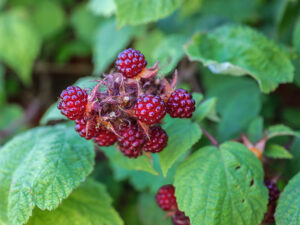
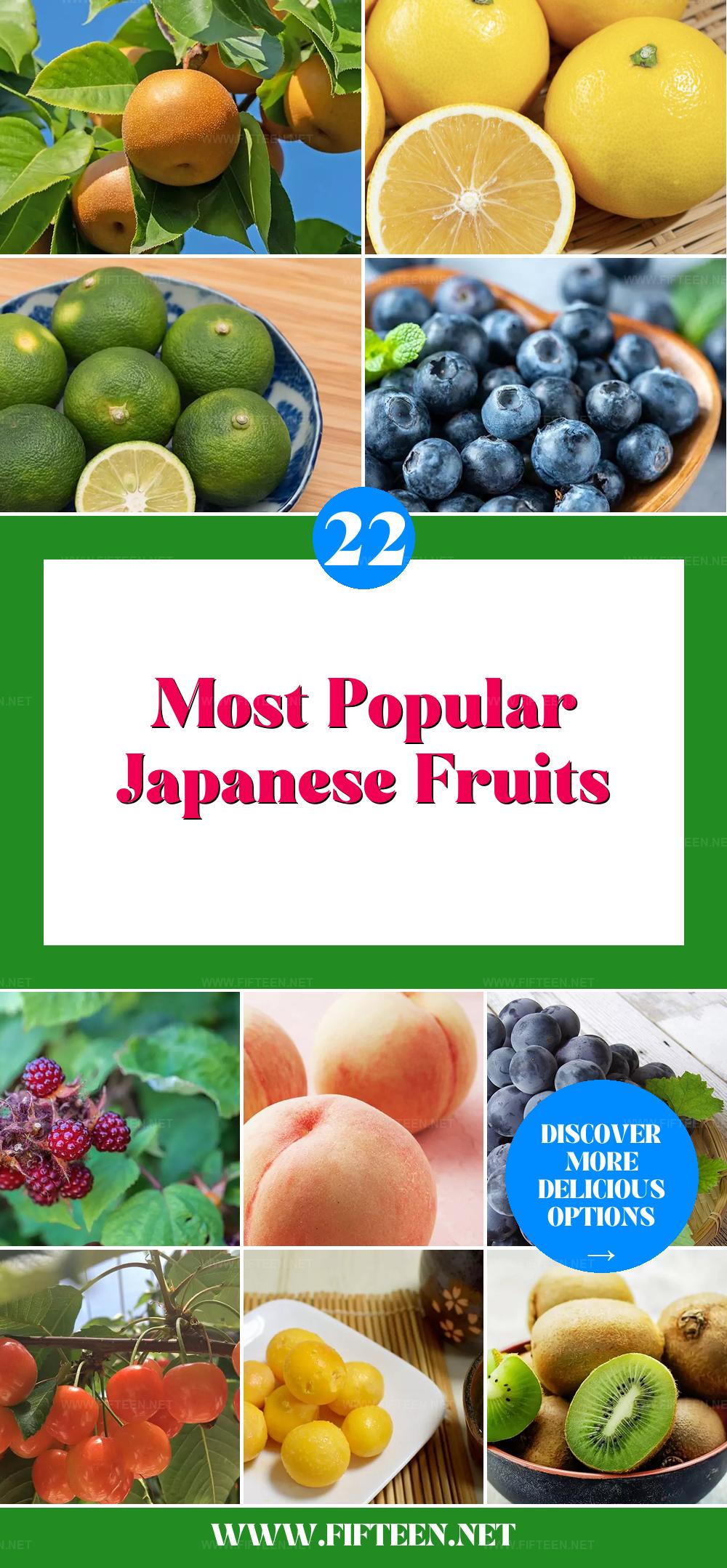
Jamie Scott
Editor in Chief, Senior Content Writer
Expertise
Home Cooking, Meal Planning, Recipe Development, Baking and Pastry, Food Editor, Cooking-video Maker, Western Food Evaluation Expert
Education
Le Cordon Bleu College of Culinary Arts
Local Community College, New York, NY
Jamie Scott is a skilled culinary expert and content creator specializing in Western cuisine. With over 15 years in the culinary field and formal training from Le Cordon Bleu, Paris, Jamie deeply understands how to blend nutrition with delicious flavors. His passion for cooking matches his commitment to making healthy eating accessible and enjoyable.
On Fifteen.net, Jamie brings a fresh perspective to classic dishes and beverages, offering readers insightful recipes, cooking tips, and a fresh view on meal planning that emphasizes taste, health, and simplicity.